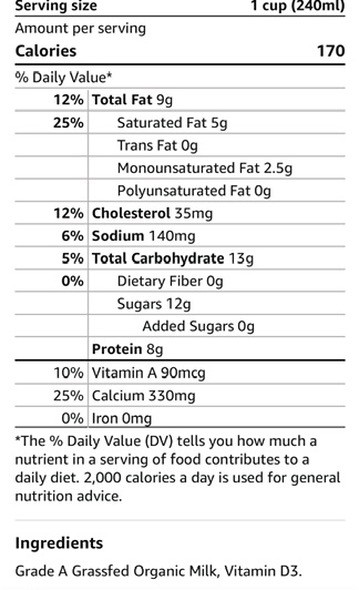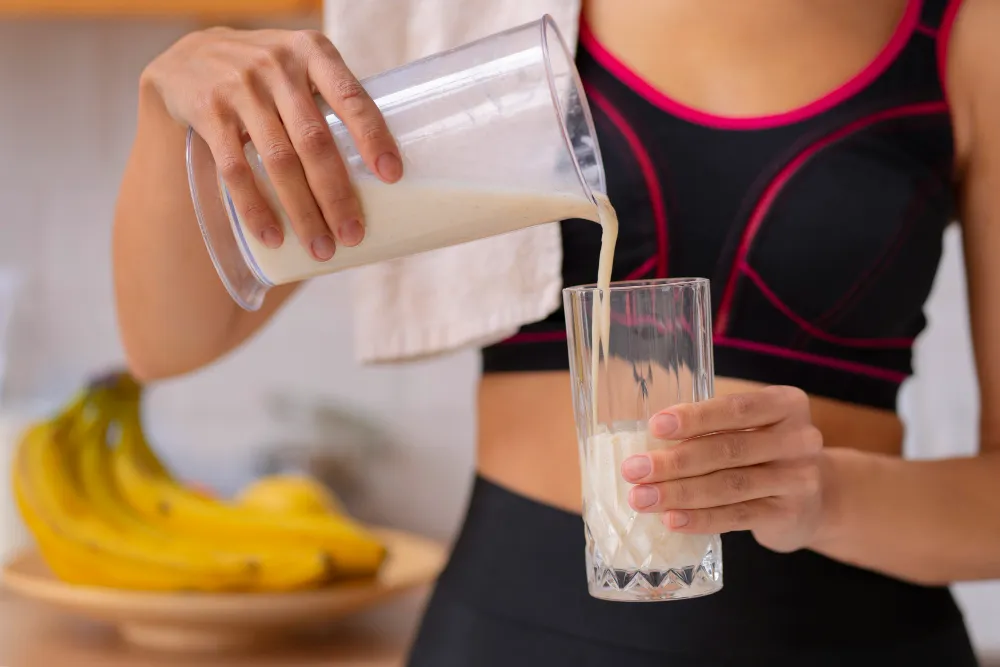As a pediatrician with over two decades of experience, I’m often asked about nutrition for growing children. Recently, a math teacher inquired about protein shakes for her kids who are “at that age” when they’re expending a lot of energy. This question touches on a common concern among parents: ensuring adequate protein intake for active children. Let’s dive into this topic, examining the pros and cons of protein shakes versus whole food sources.
The Protein Shake Dilemma
When asked about protein shakes or powders, I can’t help but express some hesitation. These products, while convenient, are not whole foods but processed supplements. The protein in these shakes typically comes from milk sources (casein or whey) or peas, which undergo significant processing to become powders.
The Processing Problem
To create protein powders, proteins are isolated from their natural sources, dried, and ground into uniform powders. This process alters their natural structures. While research on the long-term effects of consuming these processed proteins is limited, it’s generally accepted that natural food sources are superior to their processed counterparts.
Analyzing a Popular Protein Shake
Let’s examine the label of a popular protein shake marketed for kids:

- Protein content: 8 grams per 244 mL serving
- Main ingredients:
- Water
- Proprietary protein blend
- Rice dextrin (a processed rice sugar)
- Cane sugar
- Oil
- Brown rice syrup
- Inulin (a plant carbohydrate)
- Various additives and fortified vitamins/minerals
Comparing to Whole Milk
Now, let’s compare this to a simple glass of whole milk:

- Protein content: 8 grams per ~240 mL serving.
- Ingredients: Milk and vitamin D (fun fact: vitamin D does not naturally occur in milk but most milks in the United States have vitamin D added).
The protein content is identical, but there are crucial differences:
- Added sugars: The shake contains added sugars, while milk naturally contains lactose.
- Additives: The shake includes various additives not present in milk.
- Fortification: While the shake is fortified with vitamins and minerals, these are often more bioavailable in whole food sources.
- Fats: Whole milk has more fat and kids, especially young kids, need their fats. It is saturated fat, which is not my favorite, but I would prefer protein, carbs and fat, all in their natural packaging, complete with immune benefits, over their processed, isolated and then reconstituted counterparts.
Protein Needs for Active Kids
The Institute of Medicine recommends, on average:
- Ages 1-3: 1.05 gm/kg/day or about 13 grams per day
- Ages 4-8: 0.95 gm/kg/day or about 19 grams per day
- Ages 9-13: 0.95 gm/kg/day or about 34 grams per day
- Teen boys 14-18: 0.85 gm/kg/day or about 52 grams per day
- Teen girls 14-18: 0.85 gm/kg/day or about 46 grams per day
Interestingly, surveys indicate that the average Western child and teen often consumes as much as 3-4 times this recommended amount. It makes me wonder if we are over-focusing on a problem that isn’t.
Natural Alternatives to Protein Shakes
Instead of relying on processed shakes, consider these whole food options to boost protein intake:
- Extra glass of milk (8g protein). Add your own cinnamon or cocoa powder– even your own sugar. I promise it will be less than in storebought products.
- 3/4 cup Greek yogurt (16g protein). Add your own fruit or honey.
- 1/2 cup cottage cheese (16g protein).
- 1/4 cup peanuts, cashews, or sunflower seeds (5-7g protein). Add a few chocolate chips.
- 2 tablespoons peanut or almond butter (8-9g protein).
These options not only provide protein but also offer additional nutrients in their natural forms. And as a bonus, we do not have to worry about the heavy metal contaminants that may be hiding in protein powders used for protein drinks.
Conclusion
While protein shakes may seem like a convenient solution for active kids, whole food sources of protein are generally a better choice. They provide protein along with other essential nutrients without the multiple forms of sugars or additives often found in processed shakes.
As a parent and a pediatrician, I advocate for a balanced diet rich in whole foods. If you’re concerned about your child’s protein intake, consult with a pediatrician or registered dietitian for personalized advice tailored to your child’s specific needs.
Remember, the goal is not just to meet nutritional requirements but to foster healthy eating habits that will serve your children well into adulthood.
If you would like to have a personal wellness coach as you navigate your health and your family’s health, please reach out. I am taking limited online clients. Alternatively, send me your questions and I will try to write articles to answer them. angel@doctorangel.com
References:
- Mozaffarian, D. (2016). Dietary and Policy Priorities for Cardiovascular Disease, Diabetes, and Obesity: A Comprehensive Review. Circulation, 133(2), 187-225. https://www.ncbi.nlm.nih.gov/pmc/articles/PMC4814348/
- Melse-Boonstra, A. (2020). Bioavailability of Micronutrients From Nutrient-Dense Whole Foods Versus Supplements. Nutrients, 12(6), 1506.
- Institute of Medicine. (2005). Dietary Reference Intakes for Energy, Carbohydrate, Fiber, Fat, Fatty Acids, Cholesterol, Protein, and Amino Acids. Washington, DC: The National Academies Press. https://www.nap.edu/catalog/10490/dietary-reference-intakes-for-energy-carbohydrate-fiber-fat-fatty-acids-cholesterol-protein-and-amino-acids
- Berryman, C. E., Lieberman, H. R., Fulgoni, V. L., & Pasiakos, S. M. (2018). Protein intake trends and conformity with the Dietary Reference Intakes in the United States: analysis of the National Health and Nutrition Examination Survey, 2001–2014. The American Journal of Clinical Nutrition, 108(2), 405-413.
- Bandara SB, Towle KM, Monnot AD. A human health risk assessment of heavy metal ingestion among consumers of protein powder supplements. Toxicol Rep. 2020 Aug 21;7:1255-1262. doi: 10.1016/j.toxrep.2020.08.001. PMID: 33005567; PMCID: PMC7509468.



